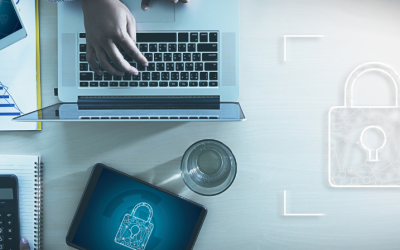
Content:
-
-
-
-
- 1. Instanll An Anti-Virus Software for Cybersecurity
- 2. Keep Your Systems Up-To-Date
- 3. Hardened Systems for Cybersecurity
- 4. Keep Your Network Secure
- 5. Use Strong Passwords
- 6. Back Up Your Data Regularly for Cybersecurity
- 7. Educate Yourself About Cybersecurity
- 8. For Cybersecurity Use Safeguards when sharing files online
- 9. Don’t give away personal information
- 10. Increase your Cybersecurity by Staying vigilant about phishing scams
- Conclusion
-
-
-
Hybrid work models are becoming increasingly popular, but they present unique cybersecurity challenges. Here are some best practices for protecting your business against cyber threats.
1. Install An Anti-Virus Software for cybersecurity
One of the best practices for cybersecurity in your business is to install anti-virus software. This will help protect your computer from viruses, malware, and other online threats. There are many different types of anti-virus software available, so make sure to choose one that is right for your business.
2: Keep Your Systems Up-To-Date
One of the best practices for cybersecurity in your business is to keep your systems up-to-date. This includes both your software and your hardware. Keeping your system up-to-date will help ensure that you have the latest security features and patches.
3: Hardened Systems for cybersecurity
It’s essential to have systems that are hardened to reduce the chances of being attacked. By hardening your systems, you make it more difficult for hackers to gain access to your computer or data. There are a variety of different ways you can harden your system, so be sure to do it and increase your cybersecurity.
4: Keep Your Network Secure
One of the best ways to keep your business safe from cybersecurity threats is to keep your network secure. Make sure you have a strong firewall in place. This will help to block unwanted traffic and keep your network safe.
5: Use Strong Passwords
It’s important to use strong passwords to keep your business safe from cybersecurity threats. Use secure passwords for all of your accounts. Avoid using simple passwords that can be easily guessed. Instead, use a combination of letters, numbers, and special characters.
Hybrid work models are becoming increasingly popular, but they present unique cybersecurity challenges.
6: Back up your data regularly for cybersecurity
Backing up your data regularly is one of the best ways to protect your business from cyber threats. By backing up your data, you can ensure that you have a copy of it in case it is lost or stolen. There are a few different ways you can back up your data:
– Use an external hard drive or USB drive to store a copy of your data.
– Upload your data to a cloud storage service, such as Dropbox or Google Drive.
– Keep a physical copy of your data on a CD or DVD.
Be sure to back up your data in multiple places so that you have a backup in case one of the copies is lost or damaged.
7: Educate yourself about cybersecurity
It’s important to educate yourself about cybersecurity threats and how to avoid them. There are a variety of resources available that can help you learn about the latest threats and how to protect yourself. The Cybersecurity and Infrastructure Security Agency (CISA) offers a variety of free resources on its website, including webinars, tips, and publications. The Bank of Scotland also offers training to avoid cyber fraud. This kit includes information on how to create a cybersecurity plan, how to train employees, and what to do in the event of a breach.
8: For cybersecurity use safeguards when sharing files online
When sharing files online, it is important to use safeguards to protect your data. There are a few different ways you can do this and increase your cybersecurity.
-Make sure you are using a secure file-sharing service. This will help to ensure that your data is encrypted and safe from being accessed by unauthorized individuals.
-Only share files with people who you know and trust. Avoid sharing files with strangers or people you don’t know well.
9: Don’t give away personal information
For your business, and personal, cybersecurity, It’s important to be careful about the personal information you share online. Hackers can use this information to steal your identity or to access your accounts. You should never give away your NI number, credit card number, or bank account number online. If you receive an email asking for this information, do not reply. These are usually scams known as phishing attacks.
10: Increase your cybersecurity by staying vigilant about phishing scams
It’s important to stay vigilant about phishing scams to protect your business from cybersecurity threats. Phishing scams are attempts by hackers to obtain sensitive information such as passwords or credit card numbers by masquerading as a trusted individual or organization. They may do this by sending an email that appears to be from a legitimate source, such as a bank or government agency. The email may contain a link that takes you to a fake website that looks identical to the real one. Once you enter your login information, the hacker will have access to your account. To protect yourself from phishing scams, never click on links from unfamiliar sources and be sure to verify the identity of the sender before sharing any personal information.
Conclusion about 10 best practices for Cybersecurity
These are some of the best practices that will help protect your business from cyberattacks. Implement these tips and you will be well on your way to a safe and secure network. Read more about Cybersecurity in our blog.
Get your FREE IT Audit
To give you confidence in our service, get to know us and how we work, contact us for your Free IT Audit.
The IT Audit
- Provides us with the information to assess the status of your systems.
- Identifies any vulnerabilities and potential concerns.
- Shows you how we manage your systems and report back.
Stay Up to Date With Us
Subscribe to Our Newsletter
Follow Us
Click below to explore our feeds!
Services
IT Consultancy
Communications Solutions
Service Levels
Resources
About US
Success Stories
Terms & Conditions
Privacy Policy
Quick Links
Shop
Blog
Contact Us




